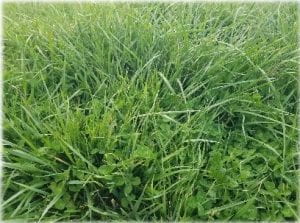– Kyle Verhoff, Allen Gahler, Jason Hartschuh, CCA, OSU Extension

Planting window runs to late April for southern Ohio and to early May in Northern Ohio.
As soil temperatures rise and the chances of a morning frost decline, the window to spring-establish forages is open. In the spring, the combination of weather and plenty to do make planting opportunities scarce. To take advantage of those short planting windows, the following are items to consider to improve chances for a successful forage establishment this spring.
- Soil Fertility and pH: Set up your forages with the best starting conditions you can by providing sufficient available nutrients and a soil pH that allows for those nutrients to be taken up. Follow the Tri-state Soil Fertility Recommendations (https://forages.osu.edu/forage-management/soil-fertility-forages). Phosphorus levels for grass are optimal in the . . .
Continue reading Spring Forage Establishment







